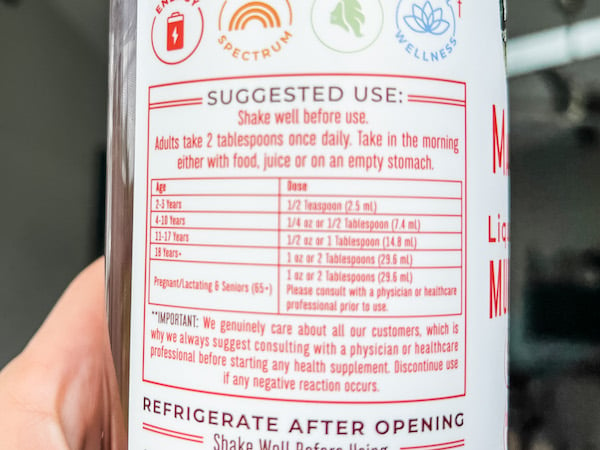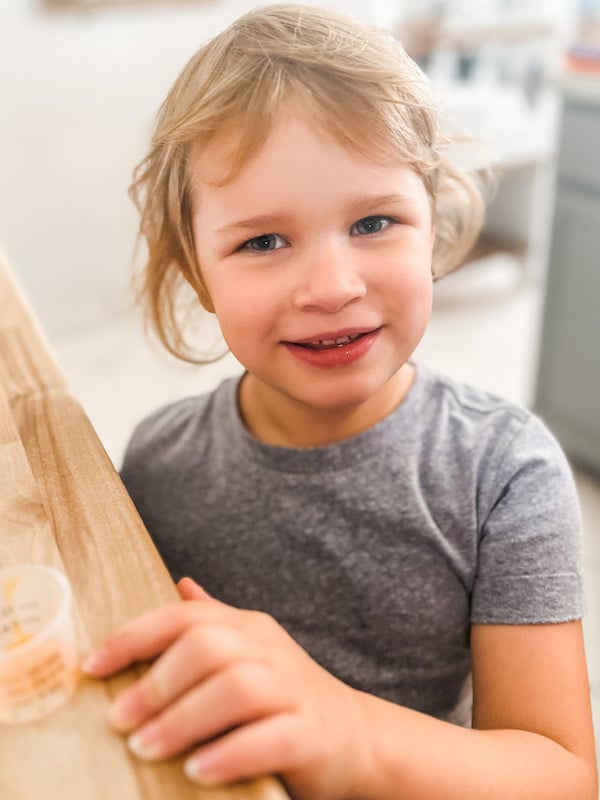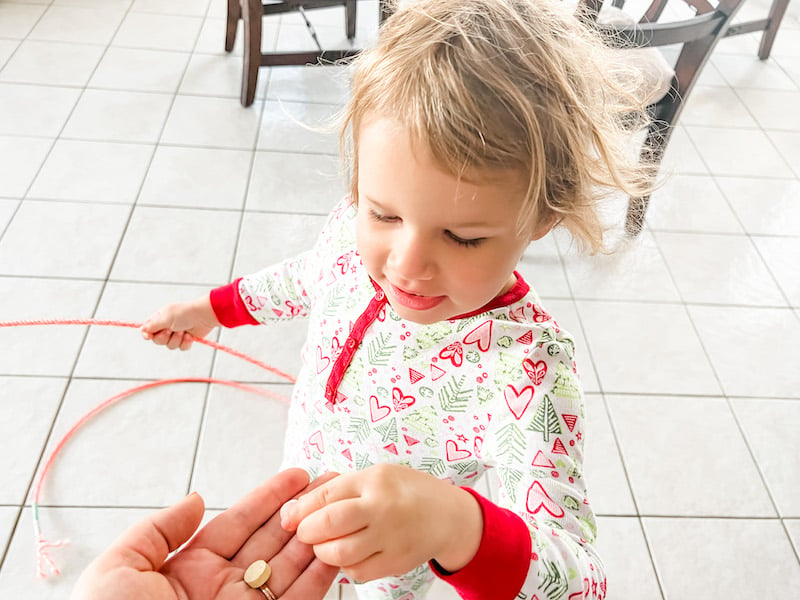Interested in Hiya vs Mary Ruth’s high-quality multivitamins for kids but not sure which one is the better choice?
Here I’ll compare these brands according to sugar content, texture, price, packaging, and ingredients. Toddler approval may be as varied as toddlers themselves, so you may have to try these on your toddler and see what they like best.
Let’s dive in!
Hiya vs Mary Ruth Sugar and Sweeteners
Adding sugar is a surefire way to make multivitamins appeal to toddlers, but these brands haven’t compromised here. They’ve managed to create a multivitamin without added sugar which still tastes pretty good.
Hiya uses monk fruit extract and a hint of mannitol to create that desired sweetness. Monk fruit’s unique antioxidants mean it’s sweet enough to rival sugar, and mannitol is a sweetener found naturally in fruits and vegetables. I get why dentists promote it as a sugar alternative.

Mary Ruth’s Liquid Morning Multivitamin contains glycerin, a natural compound found in vegetable oils and animal fats (although Mary Ruth’s is vegan). Glycerin gives this multivitamin its sweetness and acts as a base for the active ingredients.
Most nutritional labels include sugar alcohols, and glycerin specifically, as a carbohydrate, even though they differ from sugar in caloric content and health impact (the body digests them differently). You’ll see that Mary Ruth’s has 8g total of carbohydrates, but none of that is added sugar.
I like how both Hiya and Mary Ruth’s found ways to create healthy products that still taste sweet.
Winner: Tie
Vitamin Texture and Format
The texture of toddler multivitamins can be the deciding factor on whether or not you buy it again–because if it doesn’t pass the Toddler Texture Test, you either have a daily fight on your hands, or you’ve wasted money.
Vitamins often take one of three forms: chewable tablets, liquid, or gummies. Hiya vitamins are chewable tablets, similar to chalky Sweetarts or Tums, whereas Mary Ruth’s is a liquid format.

This is the first time I’ve tried a liquid vitamin with my kids. Liquid allows the multivitamin to be delivered without all of the “gummy junk,” though it still has ingredients like vegetable glycerin (helps oil and water-based ingredients mix), xanthan gum (thickener), and potassium sorbate (preservative).
I’ve got to be honest: I don’t love the liquid. It reminds me of taking Tylenol or Pepto Bismol. It doesn’t taste awful, but it’s not enjoyable. I also saw that a few negative reviews mentioned black specks in the liquid and an inconsistent formula; one shipment had orange liquid, and the next had yellow. But it does get good reviews overall.
I guess it’ll depend on how well your kids take liquids. My kids do great with liquid Tylenol, so they didn’t complain about Mary Ruth’s liquid format. My daughter actually likes taking liquid medicine, so she was a happy gal.


Still, I know a lot of toddlers refuse to take liquid medicines. Moms have to continually get creative, mixing it with applesauce, orange juice, or yogurt. Even then, those little detectives can tell something’s not quite the same.
For those moms, I’d definitely choose Hiya. If your kids are anything like mine, they will think it’s candy, and there will be no complaints.

As far as texture goes, Hiya works better for us.
Winner: Hiya
Packaging And Sustainability Comparison
I really like Hiya’s packaging. After you subscribe, they send a reusable glass container with no plastic in sight. Your next deliveries come as refill packets, which you use to top up the glass container. I love how this promotes sustainability and creates less waste.

My one negative is the glass bottle. I’m generally pretty careful, but I’d hate to drop the thing and end up with glass shards all over my kitchen.
Mary Ruth’s liquid multivitamin comes in a plastic bottle, but because you get a new bottle every time you order, it’s not the most eco-friendly option.
Another thing to note is that Mary Ruth’s has to be refrigerated. The bottle is HUGE, which means it’s taking up space in my already-jam-packed fridge.

Because Hiya has sustainability in mind and the bottle is easy to store, I’d say Hiya wins.
Winner: Hiya
Mary Ruth vs Hiya Price
Vitamins aren’t a one-and-done purchase, so I get how price is a major deciding factor for most moms.
Hiya offers 50% off your first order, so the first month is only $15. But for subsequent orders, Hiya charges $30 for a 30-day supply for one child. If you add more kids to the subscription, though, the price drops down a sliding scale.
Hiya:
Kids | Price |
|---|---|
1 | $30 |
2 | $28 per child |
3 | $25 per child |
4 | $24 per child |
5 | $23 per child |
Mary Ruth’s costs more initially, but it ends up being more cost-effective than Hiya. One 32-oz bottle costs $44.95 (or $40.46 if you subscribe monthly). That’s over 370 servings for ages 2-3 and over 125 servings for ages 4-10.

It might depend on how many kids you have, but Mary Ruth’s seems to have Hiya beat on price.
Winner: Mary Ruth’s
Hiya vs Mary Ruth Age Range
Sometimes choosing the best vitamin for your kids might come down to the recommended age. Often multivitamins are only advertised as suitable for ages 4+. But what about the picky eating stage that often sets in around age 2? That’s when kids really need a multivitamin!
Thankfully, both Hiya and Mary Ruth’s are suitable for ages 2+.


In fact, Mary Ruth’s is unique in that it can be taken by the entire family; you just adjust the serving size based on your age (2.5 mL for toddlers vs. 29.6 mL for adults).
If your older kids are also picky eaters, or you’re feeling particularly exhausted by the mom life, Mary Ruth’s might be a good choice.
Winner: Mary Ruth’s
Hiya vs Mary Ruth Toddler Approval
I warned you that Toddler Approval is a difficult one to gauge. Who on earth knows what toddlers will like on any given day? Sometimes you can’t know which vitamins your kids will like best until they try them, but here’s a summary of our experience.
My kids love Hiya vitamins. As I mentioned before, it’s like I’m giving them candy. But my kids are also great at taking liquid medicines like Tylenol, so they didn’t mind Mary Ruth’s liquid format.


You know your kids best. Will you be furtively mixing Mary Ruth’s into their yogurt and then begging your toddler to finish said yogurt? Will every morning be a showdown?
If there’s any chance your child will turn their nose up at liquid or immediately realize their yogurt tastes different, go for Hiya.
Winner: Hiya
Hiya vs Mary Ruth Included Vitamins and Ingredients
Let’s compare Hiya vs Mary Ruth’s ingredients:
Vitamins & Minerals | Mary Ruth’s (per serving) | Hiya |
|---|---|---|
Vitamin A | ✓ | ✓ (as 65% beta carotene and 35% retinyl palmitate) |
Vitamin C (as ascorbic acid) | ✓ | ✓ |
Vitamin D3 | ✓ (as vegan cholecalciferol) | ✓ (as vegan cholecalciferol) |
Vitamin E | ✓ (as d-alpha-tocopherol) | ✓ (as d-alpha-tocopherol) |
Vitamin B1 | ✓ (thiamine) | ✓ (thiamin) |
Vitamin B2 (as riboflavin) | ✓ | ✓ |
Vitamin B6 | ✓ (as pyrodoxine hydrochloride) | |
Niacin | ✓ | |
Folate | ✓ (as calcium folinate) | ✓ (as calcium L-5-methyltetrahydrofolate) |
Vitamin B12 (as methylcobalamin) | ✓ | ✓ |
Biotin | ✓ | ✓ |
Pantothenic acid (as D-calcium pantothenate) | ✓ | ✓ |
Calcium (as calcium carbonate) | ✓ | |
Iodine (as potassium iodide) | ✓ | |
Zinc (as zinc citrate) | ✓ | ✓ |
Selenium (as selenomethionine) | ✓ | |
Manganese (as manganese citrate) | ✓ | |
Choline | ✓ | |
Chromium | ✓ (as chromium picolinate) | |
Inositol | ✓ | |
Methylsulfonylmethane | ✓ | |
Proprietary Branched Chain Amino Acid Complex (L-Leucine, L-Isoleucine, L-Valine) | ✓ | |
Betaine | ✓ | |
Hesperidin | ✓ |
I love both Hiya and Mary Ruth’s ingredient list, as they’re both full of plant-based vitamins and minerals.
There are a couple of differences to point out:
- Hiya includes Selenium, which supports sleep, mood, and helps with inflammation. Kids’ bodies can’t make it on their own yet, yet most vitamin brands leave it out, including Mary Ruth’s.
- Hiya includes Manganese, which supports metabolism and helps with inflammation. Many vitamin brands overlook this, and Mary Ruth’s is one of them.
- Unlike Mary Ruth’s, Hiya includes Calcium, which supports bones and development. Kids don’t naturally produce calcium, and most don’t get the calcium they need from food alone. Because of this, their bodies start “borrowing” calcium for their bones.
- Mary Ruth’s has Choline, which the liver can make. It’s also found in foods like meat, fish, eggs, beans, and nuts. Choline helps the brain and nervous system regulate mood, muscle control, and memory, among other functions.
- Mary Ruth’s includes Betaine, a substance found in beets, spinach, and whole wheat which can help enhance digestion and lower the risk of heart disease.
- Inositol, also found in Mary Ruth’s, is a type of sugar which can make cell membranes and regulate insulin levels. It’s also known to boost your mood and help with metabolism.
Mary Ruth’s has a few extra ingredients like glycerin, xanthum gum, and potassium sorbate, but it prides itself on being vegan, gluten-free, sugar-free, nut-free, and soy-free.
Hiya and Mary Ruth’s each have vitamins and minerals that the other one excludes. Many of Mary Ruth’s extra ingredients can also be found in food, but if your toddler isn’t a fan of things like spinach or fish (or beets!), I can understand why Mary Ruth’s would include certain vitamins in their product.
However, I do like that Hiya includes vitamins like calcium, selenium, and manganese. Because of this, I’m siding with Hiya.
Winner: Hiya
Hiya vs Mary Ruth Third-Party Testing
Hiya and Mary Ruth’s both manufacture their vitamins in a cGMP-compliant facility, following the FDA’s current good manufacturing practices. I love that I can trust that the manufacturing process is properly designed, controlled, and monitored.
Each brand also does third-party lab testing of its vitamins to make sure they are safe and of the highest quality. Through this process, they test for trace amounts of heavy metals, allergens, pathogens, and microbial.
Vitamin brands don’t have to do this; I love that they’re doing everything they can to make safe products for our kids.
One more thing: MaryRuth’s is also Clean Label Project-Certified. The Clean Label Project is a non-profit that brings to light environmental contaminants which could affect consumer products and then ensures products pass their tests.
They strive for truth and transparency in consumer product labeling and put a bigger emphasis on data and science than on mere marketing.
Because Mary Ruth’s goes the extra mile with the Clean Label Project, I’m calling Mary Ruth’s for the win.
Winner: Mary Ruth’s
And the Winner Is…
All things considered, both Hiya and Mary Ruth’s are solid choices for toddler multivitamins.
Hiya works better for my family; I still have young kids so I don’t need an all-ages multivitamin, and the kids (and I) like the chewable tablet. But Mary Ruth’s price is pretty awesome.

Whatever multivitamin you choose, you can be sure it’ll help your kids grow into healthy adults.
Related:














We love hiya! It’s our favorite and the best out there!
Same!
Agreed — hiya is fantastic
Both a worth checking out yet our pediatrician suggest said she love hiya. So we tried it and were shocked how many families are obsessed. Our neighbor, her friends, a family from school, and two more families all swear by hiya and the customer service and the ingredients and the cute packaging. So we’re officially converts lol.
Thanks for the helpful info. I was excited to try Hiya but found them to be too sweet and, unfortunately, none of my 4 kids liked them. Maybe we’ll try Mary Ruth’s.
That’s interesting! The Hiya vitamins are less sweet than other kid’s options on the market, but everyone has different preferences for sure. Try Mary Ruth’s and let me know how that goes!
Odd — our two boys love hiya. Tastes great. We’ve been with them for about seven months.
Same! We do hiya and love it!